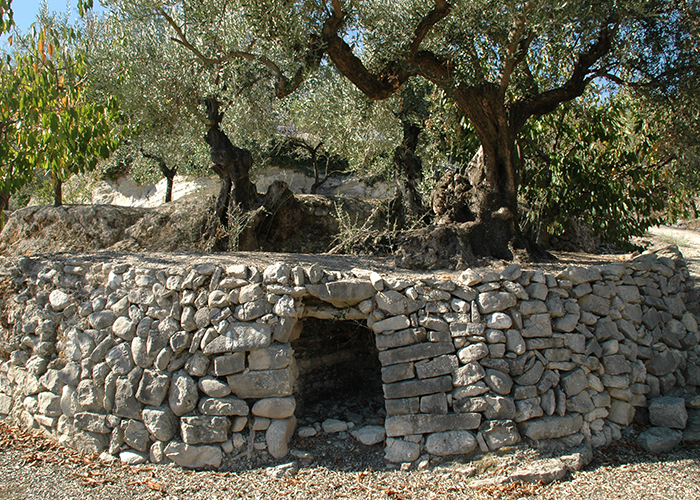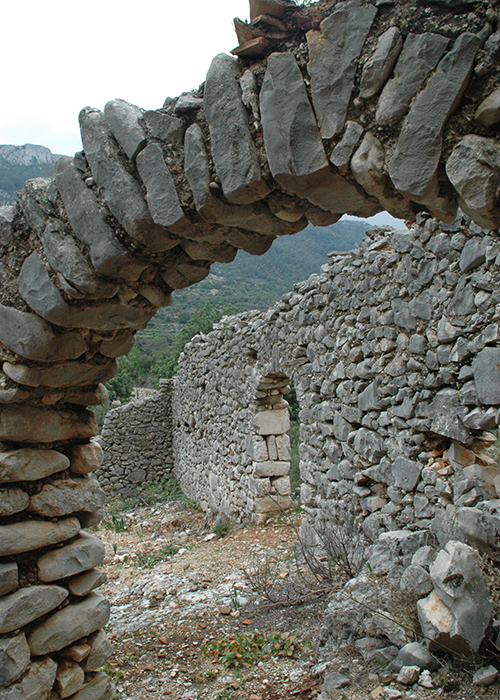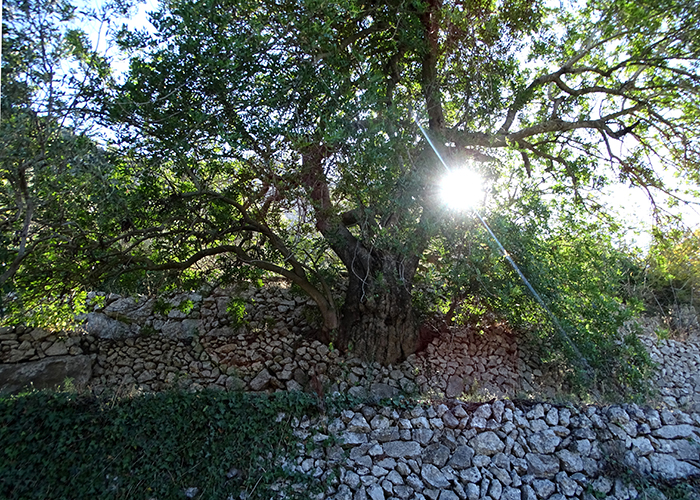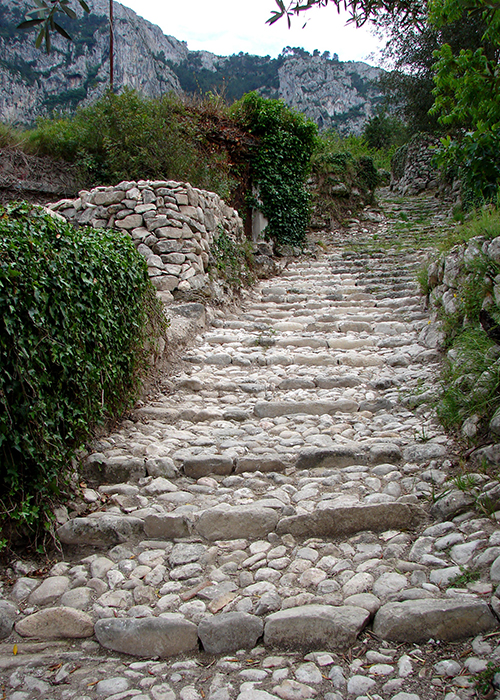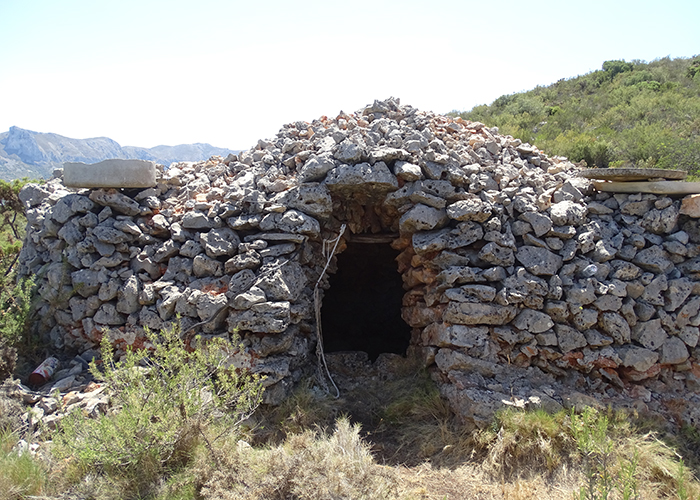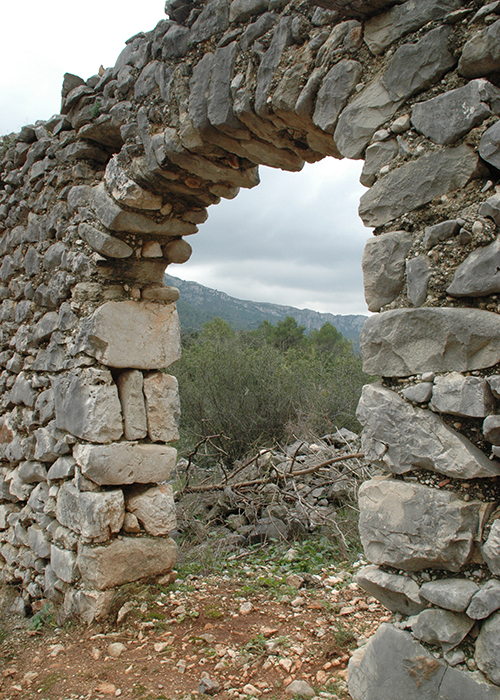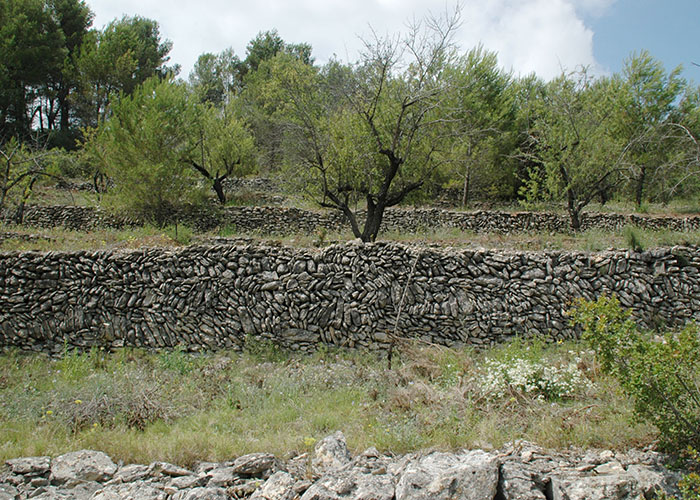Dry stone construction
We could define La Vall de Gallinera as a narrow and rugged valley that nevertheless has fertile lands. This singularity, together with the necessities which existed during times when the economy of the families was based on self-subsistence agriculture, made its inhabitants take advantage of every little piece of land that had any kind of chances of being cultivated. Therefore, they transformed the valley’s difficult orography into a place organised as an innumerable sequence of terraces. This transformation of the landscape —which had already surprised Cavanilles in 1793— would not have been possible without the use of the dry stone technique.
It is clear, without a doubt, that the greatest work with dry stone undertaken in La Vall de Gallinera is the myriad of terraces that have shaped the landscape giving rise to an extraordinary mixture of nature and culture, the result of an immense amount of work carried out over a period spanning several centuries.
But this construction technique —based on the use of stone as the only building element, without any material for binding— was not only used for the construction of terraces, but also for spectacular cattle paths, which were masterfully laid out in order to overcome orographic impediments and, at the same time, permit travelling with the agricultural produce loaded on the livestock. Smaller but no less interesting buildings linked to rural life were also built with the dry stone technique, such as the chapels of wells and cisterns, pens, lime kilns, huts on small plots of land, terrace shelters, hoods for chimneys, sewers, etc.
The whimsical geology of La Vall de Gallinera means that different types of rocks and stones exist in different parts of the valley. Due to the fact that the stones used in construction were usually from the same place where the work took place, so as not to move heavy loads from one site to another, it is possible to see different types of dry stone terraces and constructions. Apart from the skills of the master builder, the physical characteristics of the stone conditioned the final aspect of the structures built.
Dry stone is a nature-friendly construction technique that coexists and adapts perfectly to all ecosystems. It facilitates the infiltration of rainwater and slows down erosion. The empty spaces between the stones are taken advantage of by insects, reptiles, birds and small mammals, while at the same time being the habitat for certain rupicolous plants which are endemic to these lands.
The memory of a society which was completely tied to the land remains alive together with these constructions, a type of relationship with nature that has almost been lost today. Due to this fact and due to other reasons, there has been a lack of maintenance which is endangering the conservation of this magnificent heritage. Stopping to think about the uses of these constructions helps us rediscover the world of our ancestors and appreciate a heritage that is a part of our culture and an inseparable part of our landscape.



